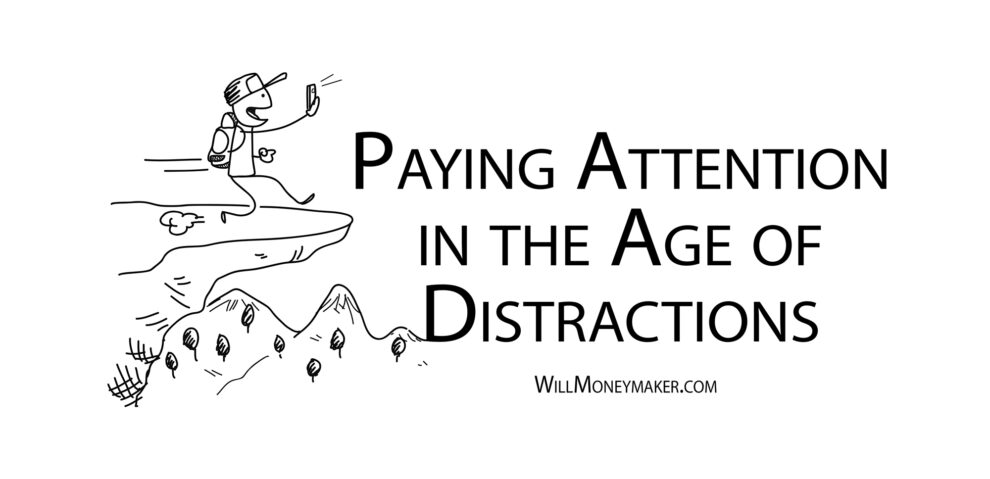There is a lot to love about modern life. So many conveniences, so many ways to make life easier, and plenty of ways to entertain ourselves, too. But that can also be part of the problem. There are just so many distractions. These days, we have not only the radio and television but our phones, the internet, social media, our favorite websites and so on. Even things like the hum of florescent lights or the air conditioner are things that can take our minds away from what’s important when we need to focus the most. These distractions, all of them clamoring for a piece of our attention, can stifle creative endeavors. That’s the thing about art. It requires our fullest attention if we want to do it well, but nowadays, with notifications constantly buzzing and emails that just have to be checked, it can be extraordinarily difficult to focus completely.
So what is the solution? The answer is, you’ll need to take several different measures to eliminate those things that keep you from focusing. Here are a few suggestions that may help you!
Dealing with Your Phone
Phones are easily the top distraction in our lives, at least, for most of us. Between calls, texts, emails, social media notifications, web surfing, games — these little devices can consume our attention for hours. And, it’s not always practical to simply shut your phone off. After all, what if there is an emergency and someone is trying to contact you?
There are, however, several tricks you can use when you need to concentrate. Your phone’s “do not disturb” mode is a great way to shut out all notifications for a while. And, if you’re concerned about missing something important, you can always schedule yourself some time to look at your phone. Set aside five minutes every hour to look at the phone, check messages, flip through emails, and if something important crops up, you can tend to it then. The rest of the time, leave your phone muted and out of sight to prevent temptation.
Another thing you can do is use an activity monitor. Some phones have monitors built in, and there are also apps that you can download that will do this for you. This tracks the amount of time you spend on your phone each day, and it’ll give you a breakdown of the time spent on specific things, like texting, web surfing or games. While this doesn’t actively stop you from playing with your phone, it does give you an idea of where all the time goes, and what tempting distractions (like games) you can minimize.
Avoiding Temptation on the Computer
When we’re post processing, the computer itself is the big distraction. You’re likely connected to the internet, which means you’ve got unlimited browsing and social media at your fingertips. What can you do about it? One solution is to simply disconnect your computer from the internet. Shut off the WiFi or unplug the router cable, and then you won’t be able to go online without reconnecting, which is a minor deterrent that will make you think twice about doing so.
This may not always be practical, however, especially if you’re relying on cloud storage or backup that connects to your router. Another solution is to keep yourself signed out of things like social media accounts. This works similarly to disconnecting completely. The act of remembering and entering your usernames and passwords in order to access social media is a small deterrent that makes you think before you browse.
Internet browsing is a bit more difficult to manage since you don’t need to sign into most news websites or other sources of entertainment. It’s all just a Google search away. This is where, again, scheduling yourself some time for these things can help you minimize the time you spend on them. As with phones, if the urge to browse the internet is a temptation that impedes your creativity, then give yourself five minutes an hour to simply browse. This way, you won’t feel as if you’re denying yourself something, and you’ll get a nice little break from post processing while you’re about it.
Distractions in the Field
Your home and office are where most of the distractions reside, but there are some to be found when you’re out on a photo trip, too. If you’re taking a drive to hunt for a new location, do you have the radio on? Chances are, you do, and you may be following along with the music or nodding to something on a talk show as you scan your surroundings. When your attention is thus divided, are you really paying attention to the scenery? These kinds of things can make it hard to really look, to see, and especially to feel the things you should feel in your present environment.
And even the air conditioning in your car can be something of a distraction. With this, it’s not necessarily the noise, although that can be a factor, too. More, the cool air provides a level of separation from the environment. If you’re out in a desert, say, are you really experiencing the fullness of the area with your windows rolled up and the A/C cranked to maximum? To really get a sense of the place, it may help to turn off the A/C, roll the windows down, smell the scents of your surroundings and feel the warmth and grit of the breeze. In this way, you can truly come to know the area you are about to photograph. Distractions are all around us, and it can be tough to reclaim our time and our brain space from things like phones, the TV and the internet. If you find yourself pressed for time or low on creative ideas, these things could be the problem. And if that’s the case, then you’ll need to find the distractions that are taking up the most of your time and look for ways to minimize them. If you can do that, you’ll find that you begin to experience more of the world around you, and you’ll start seeing more opportunities to create great photographs.






